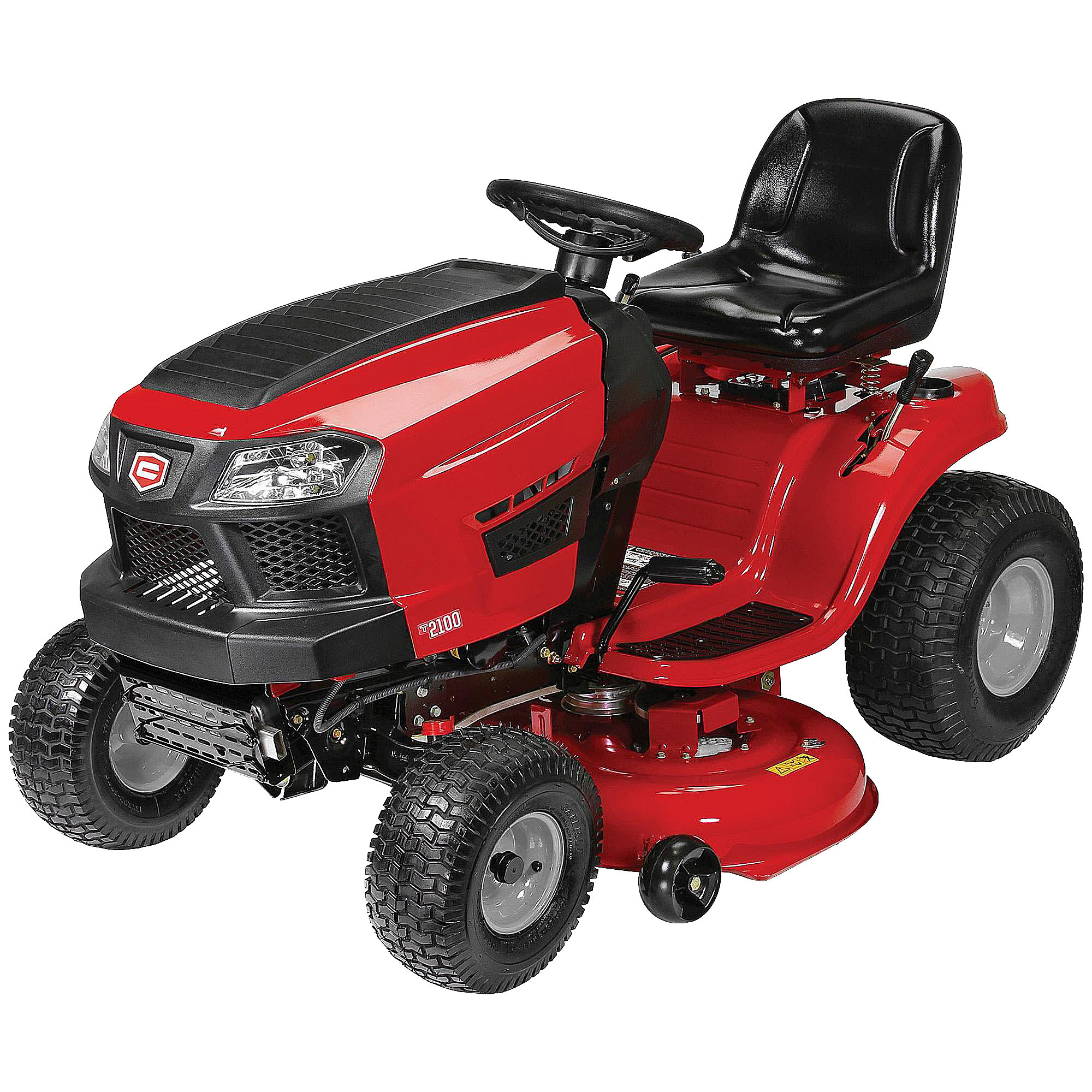If your lawn mower won’t accelerate, it may be due to a transmission issue or a problematic drive belt. This can be caused by a disengaged transmission lever or a worn-out drive belt.
When your lawn mower fails to accelerate, it’s often attributed to transmission problems or drive belt issues. Whether it’s a disengaged transmission lever or a worn-out drive belt, such issues can hinder the mower’s acceleration. It’s important to address these problems promptly to ensure the smooth operation of your lawn mower.
When your lawn mower struggles to accelerate, it can be frustrating trying to determine the cause. However, understanding the potential issues and solutions can alleviate these frustrations and get your lawn mower back in working order. Below, we’ll explore common reasons for acceleration problems with lawn mowers and provide guidance on resolving these issues effectively.
Common Issues With Lawn Mower Acceleration
When it comes to maintaining a well-manicured lawn, it’s essential to have a lawn mower that performs at its best. However, if your lawn mower won’t accelerate as it should, it can be frustrating and hinder your mowing efforts. In this section, we will discuss the common issues that can cause a lack of acceleration in your lawn mower. Understanding these issues can help you diagnose and resolve the problem efficiently, allowing you to get back to mowing with ease.
Transmission Disengage Lever
The transmission disengage lever is responsible for engaging and disengaging the transmission when you need to move the lawn mower. If this lever is not properly engaged, it can cause your lawn mower to lose acceleration. To check if this lever is the culprit, consult your lawn mower’s user manual for instructions on how to engage and disengage the transmission. Make sure the lever is in the correct position and try accelerating the lawn mower again.
Drive Belt Problems
The drive belt plays a crucial role in the acceleration of your lawn mower. If the drive belt is worn out, damaged, or improperly tensioned, it can affect the acceleration of the mower. Inspect the drive belt for signs of wear or damage, such as cracks or fraying. If you notice any issues, replace the drive belt following the manufacturer’s instructions. Additionally, check the tension of the drive belt, as a loose or tight belt can also impact acceleration. Adjust the tension accordingly to ensure optimal performance.
Transaxle Failure
A transaxle failure is a more severe issue that can cause a complete lack of acceleration in your lawn mower. The transaxle is responsible for transferring power from the engine to the wheels. If the transaxle is damaged or malfunctioning, it can prevent the mower from accelerating. Signs of transaxle failure include grinding gears, the wheels not rotating with the pulley, or the mower starting and stopping during operation. If you suspect a transaxle failure, it is advisable to consult a professional or contact the manufacturer for further assistance.
By understanding the common issues with lawn mower acceleration, you can troubleshoot the problem and get your mower back to full performance. Whether it’s a simple adjustment of the leverage or a more complicated transaxle repair, addressing these issues promptly will ensure your lawn mower runs smoothly and efficiently, allowing you to maintain a beautiful lawn with ease.
Troubleshooting Self-propelled Lawn Mowers
Self-propelled lawn mowers are convenient for maintaining your lawn, but issues such as lack of acceleration can hinder their performance. Troubleshooting self-propelled lawn mowers helps identify and resolve common problems related to their operation. By understanding how to troubleshoot and resolve issues with the self-propel feature, belts, and cables, you can ensure your lawn mower operates efficiently.
Introduction To Self-propelled Mowers
Self-propelled lawn mowers are designed to ease the strain of pushing a heavy machine across the yard. They feature a drive system that propels the mower forward, allowing users to walk behind it with minimal effort. One of the common issues with self-propelled mowers is the failure to accelerate despite other functions working properly.
Adjusting Self-propel Feature
If your self-propelled lawn mower encounters acceleration issues, it’s essential to start with the self-propel feature adjustment. It involves inspecting and adjusting the drive control cables, drive belt tension, and drive wheels to ensure they are functioning correctly. Incorrect adjustments can cause the mower to become sluggish or fail to accelerate as intended, impacting its overall performance.
Testing And Adjusting Belt And Cable
The drive belt and control cables play a crucial role in the operation of self-propelled lawn mowers. Improper tension in the drive belt or misalignment of the control cables can result in acceleration problems. Testing the belt for wear and adjusting its tension, along with ensuring proper alignment and tension of the control cables, can contribute to restoring acceleration performance in the mower.
Maintenance Tips For Optimal Engine Power
In order to ensure your lawn mower operates with efficient power and performance, it’s crucial to conduct regular maintenance on key engine components. Proper maintenance can not only resolve issues such as lack of acceleration but also extend the lifespan of your mower. Here are some essential maintenance tips to help you achieve optimal engine power:
Checking Air Filter Condition
The air filter is vital in maintaining the engine’s performance. Regularly inspect the air filter and clean or replace it if it’s clogged or excessively dirty. A clogged air filter can restrict air flow, leading to reduced engine power and acceleration.
Inspecting And Cleaning Spark Plug
A dirty or faulty spark plug can significantly hinder the engine’s power. Inspect the spark plug for deposits, corrosion, and wear, and clean or replace it as necessary. Ensuring a clean and functional spark plug is crucial for optimal engine power.
Removing Debris From Mower Deck
Debris and grass clippings can accumulate on the mower deck, hindering airflow and causing the engine to strain. Regularly remove any debris from the mower deck and clean the underside to prevent blockages. This will help maintain optimal engine power and acceleration.

Credit: www.searspartsdirect.com
Identifying Transmission Issues
Experiencing trouble with a lawnmower that won’t accelerate? Possible issues might include a faulty drive belt, transmission disengage lever, or even transaxle failure. To troubleshoot, inspect these components thoroughly and adjust as needed to ensure smooth acceleration.
Symptoms Of A Failing Transmission
If your lawn mower won’t accelerate, one potential culprit could be a failing transmission. Identifying the symptoms of transmission problems can help you diagnose the issue and find a solution. Here are some common signs to look out for:
- Difficulty in shifting gears
- Strange or grinding noises when the mower is in motion
- Lack of power or sluggish acceleration
- Wheels not rotating properly
- Mower jerking or vibrating during operation
Diagnosing Transmission Problems
Diagnosing transmission problems in your lawn mower requires a systematic approach. Here are some steps you can take to identify and address transmission issues:
- Check the transmission fluid: Start by inspecting the transmission fluid levels. Low fluid levels could indicate a leak or other issues that need attention.
- Examine the drive belt: A damaged or worn-out drive belt can cause transmission problems. Inspect the belt for cracks, fraying, or signs of wear and replace it if necessary.
- Inspect the pulley: Check the pulley for any signs of damage or misalignment. A faulty pulley can disrupt the smooth operation of the transmission.
- Test the clutch and clutch cable: If your lawn mower is equipped with a clutch, ensure that it is engaging and disengaging properly. Inspect the clutch cable for any fraying or breakage.
- Look for any loose or damaged components: Examine the transmission for loose or damaged bolts, gears, or other components. Tighten or replace as necessary.
- Seek professional assistance: If you’re unable to diagnose or fix the transmission problems on your own, it may be best to seek the help of a professional lawn mower technician.
Identifying transmission issues and addressing them promptly can help ensure that your lawn mower operates smoothly and efficiently. By following the steps outlined above, you can diagnose transmission problems and take the necessary steps to get your mower back in working order.
Common Solutions For Acceleration Problems
If your lawn mower is experiencing acceleration issues, don’t fret. Below are some common solutions to troubleshoot and fix the problem to get your mower running smoothly again.
Checking Carburetor And Muffler
1. Clean or replace the air filter to ensure proper air intake.
2. Inspect the carburetor for any clogs or build-up that may be hindering fuel flow.
3. Check the muffler for blockages or damage that could be affecting engine performance.
Addressing Idle Vs. Throttle Issues
1. Adjust the throttle settings to ensure they are properly calibrated.
2. Differentiate between idle and throttle settings to determine where the issue lies.
3. Test the idle speed and adjust as needed to improve acceleration.
Resolving No Acceleration Troubles
1. Check for any fuel line clogs or blockages that could be preventing fuel from reaching the engine.
2. Inspect the spark plug for dirt or damage, and clean or replace if necessary.
3. Clear any build-up of clippings and debris from the underside of the mower deck for optimal performance.

Credit: m.youtube.com

Credit: www.reddit.com
Frequently Asked Questions Of Lawn Mower Wont Accelerate
Why Is My Lawn Mower Not Running At Full Power?
Your lawn mower may not be running at full power due to several reasons: 1. Dirty air filter: Clean or replace the air filter. 2. Dirty spark plug: Clean or replace the spark plug. 3. Build-up of clippings and debris: Clean the underside of the lawn mower deck.
4. Clogged fuel filter: Tap the side of the carburetor to help the flow of gas or check the fuel filter for clogs. 5. Faulty carburetor: Check the carburetor for any issues with air and fuel mixing. If these steps do not resolve the issue, it may be best to consult a professional.
Why Is My Push Mower Not Getting Gas?
If your push mower is not getting gas, check the fuel filter for clogs. Tap the carburetor to help gas flow. Some mowers may not have a fuel filter.
How Do I Know If My Lawnmower Transmission Is Bad?
If your lawnmower transmission is bad, it may exhibit signs like grinding gears, starting and stopping during operation, or the wheels not rotating with the pulley.
Conclusion
If your lawn mower won’t accelerate, there could be several reasons behind it. Common issues include dirty air filters, spark plug problems, and buildup of clippings and debris. Checking and cleaning these components can help restore your mower’s power. Additionally, if your mower has a fuel filter, ensure it’s not clogged.
It’s also important to inspect the transmission and carburetor for any issues. By addressing these potential problems, you can get your lawn mower running smoothly again and achieve optimal performance.